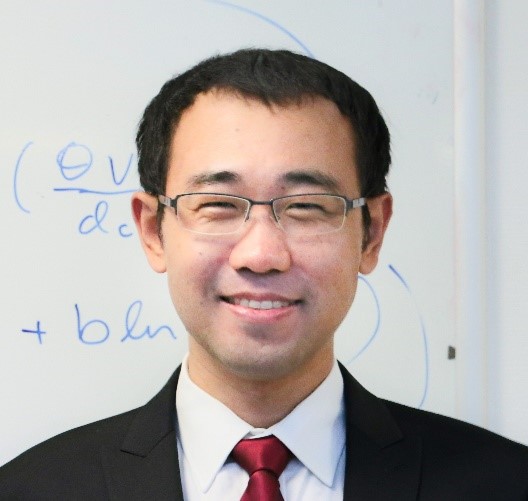Tech Lunch: Fiber Optic Strain Monitoring of Hydraulic Stimulation: From Modeling to Inversion- Apr 21st

Online Only, you must pre-register to receive access instructions.
NOTE: You Must Be Logged In to Register.
Speaker: Zhishuai Zhang, Chevron
Fiber Optic Sensing, including low-frequency Distributed Acoustic Sensing (DAS) and Distributed Strain Sensing (DSS), are recently used in offset wells to monitor strain rate or strain induced by hydraulic fracturing. We extend current qualitative analysis of fiber optic strain data by providing modeling and inversion capability for hydraulic fracture characterization with fiber optic strain data.
We used the Displacement Discontinuity Method (DDM) to model the strain field around kinematic propagating fractures. The fracture propagation is modeled by prescribing gradually increased fracture size and calculating the displacement discontinuities that representing fractures at each time step. Modeling provides insight into strain patterns observed by DAS/DSS during hydraulic stimulation.
To invert for the fracture models during a hydraulic stimulation stage, we assign an initial fracture plane with homogeneous fracture aperture to each of the identified fracture-hit locations. Then, we use DAS/DSS data to constrain fracture aperture distribution along these fractures. Depending on the necessity and data availability, fracture models can be jointly constrained with pressure, temperature, or microseismic data.
We compared and verified our modeling/inversion results using data from the Hydraulic Fracturing Test Site 2 (HFTS2). The modeling helps unravel the patterns observed by DAS/DSS during hydraulic fracturing. The inverted hydraulic fracture models can be used for stimulation optimization and production forecasting.
Speaker Biography: Zhishuai Zhang, Chevron
Zhishuai (Z) Zhang is a research geophysicist at the Chevron Technical Center. Before joining Chevron in 2019, he was a postdoc scholar of the Stanford Rock Physics & Borehole Geophysics Project (SRB) at Stanford University. He received a Ph.D. (2017) in geophysics from the University of California, Berkeley, an M.S. (2012) in petroleum engineering from Texas A&M University, and a B.S. (2010) in physics from Nankai University. His research interest is about understanding subsurface activities using multidisciplinary data such as Distributed Acoustic Sensing (DAS), Interferometric Synthetic Aperture Radar (InSAR), microseismic, seismic, pressure, and temperature.
**Access information will be distributed after registration closes.
Price List:
|
Pre-Registered |
Member
|
Free |
| Non-Member |
$10 |
** Please be aware that ALL registrations must go through 'Checkout', even if your total is zero. Registration is not confirmed until you complete the checkout process.